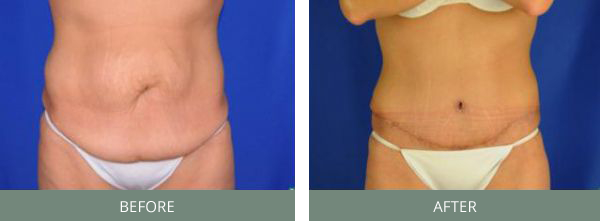SAINT LOUIS BREAST RECONSTRUCTION: PAP FLAP
What is a PAP flap? A PAP flap, also known as the profunda artery perforator flap, is the newest form of microvascular breast reconstruction following mastectomy. It uses tissues from the inner thigh and inner and lower buttock to reconstruct the breast. Skin and fat are taken from the upper inner thigh and buttock, leaving a well-concealed scar similar to that seen with a cosmetic thigh lift. This skin and fat gets its blood flow from a branch, or perforator of the profunda femoris artery. The skin and fat are transferred from the inner thigh and buttock to the breast where the blood flow is re-established most commonly to the internal mammary artery and vein.

The technique whereby blood vessels are reconnected under a microscope to restore bloodflow is called microsurgery. Surgeons, operating room teams, and hospitals that have significant experience with microsurgery perform the PAP flap. Candidacy for a PAP flap is determined by the specific anatomy of the inner thigh, previous thigh surgery, body weight and aesthetic expectations. The PAP flap does not provide as much volume for breast reconstruction as a free TRAM or DIEP flap. With a PAP flap, the reconstructed breast may be 50-90% as large as the original breast before mastectomy, but an implant and abdominal scar are avoided. The PAP flap may be safer for patients who are moderately obese (35-40) and can also be performed in patients of normal body weight. The PAP flap may also be combined with another flap such as the DIEP flap to add volume – a procedure known as a “stacked flap.”

In appropriate cases, the PAP flap is an excellent option for breast reconstruction with the patient’s own tissues when she is not a candidate for or does not want a DIEP, SIEA, free TRAM or latissimus flap.

Dr. Terry Myckatyn and
Dr. Marissa Tenenbaum:
Trusted. Experienced. Committed.
Reconstructive timeline with PAP flap:
- First operation: Breast reconstruction with PAP flap(s) ± mastectomy
- Office visits: Drain removals and wound checks.
- 3 months*: “Touch up” cosmetic appearance of PAP flap if required; possible balancing procedure on other side. Possible fat grafts to optimize breast contours.
- 6 months*: Nipple reconstruction. Possible fat grafts to optimize breast contours.
- 8 months*: Areola (pigmented circular area that surrounds the nipple) reconstruction with tattoo.
- 12 -24 months*: Laser or IPL scar therapy.
- If you are having an immediate PAP flap (mastectomy and PAP flap at the same time) and chemotherapy is required, please add 4 months to the timeline. If radiation therapy is also required, please add 9 months to the timeline.




Anesthesia: A PAP flap is performed with the patient under general anesthesia.
Length of procedure: 4 to 5 hours for one breast, 6 to 8 hours for two breasts.
Before & After
Visit our Photo Gallery to see our patient results.
*Results may vary.
View Patient ResultsEstimated recovery time: Hospitalization is usually 4 to 7 days. You can return to work after 4 to 6 weeks depending on your job, and should avoid vigorous activities for 6 weeks. Visible bruising and swelling should begin to improve within 3 weeks. Recovery time, however, is highly variable and depends on your health before surgery and history of smoking and radiation therapy. Unless you have an allergy, you will be required to take aspirin for one year after surgery. To learn how to prepare for a PAP flap breast reconstruction and what to expect afterwards, click here to download our patient instructions.
Side effects: Common side effects include bruising and swelling. Blood flow to your flap will be carefully monitored after surgery. If there are concerns about the flap, you may require reoperation to assess the blood flow. You may have some early weakness in the thigh muscles, which should resolve. Some transient lower leg swelling and delayed wound healing in the inner thighs may occur.
If you have questions or would like to book a consultation with one of the surgeons at West County Plastic Surgery, please call (314) 996-8800.














